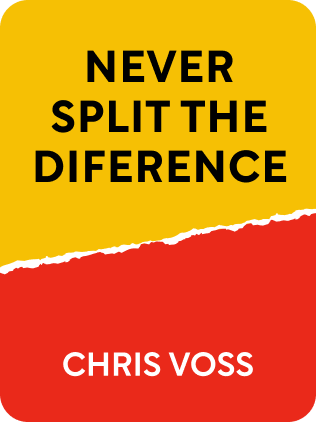

This article is an excerpt from the Shortform book guide to "Never Split the Difference" by Chris Voss and Tahl Raz. Shortform has the world's best summaries and analyses of books you should be reading.
Like this article? Sign up for a free trial here .
Are you getting ready for an important negotiation? What are some negotiation tips you should know before you face your opponent?
You need to be prepared before you head into a negotiation, regardless of which type you’re dealing with. You don’t need a script, but you do need to know these negotiation tips.
Here are some negotiation tips from a former FBI hostage negotiator Chris Voss.
4 Negotiation Tips From a Former FBI Operative
Tip 1: Don’t negotiate against yourself by settling in the middle. Shoot for your best-case scenario. This is a good way of using your own loss-aversion instinct to your advantage: you’ll feel like you “lost” if you didn’t achieve your best-case. This means you’ll work that much harder to avoid anything less than your optimal outcome.
Tip 2: Prepare Labels and Accusation Audits. Anticipate how your counterpart feels about the facts you’ve summarized. Use this to form your accusation audit: list every possible accusation you think they could make against you. Then, turn those accusations into labels that identify their feelings, like “It seems like you value X,” or “It seems like you’re hesitant to commit to X.”
Tip 3: Set Your Calibrated Questions in Advance. Figure out what the other party is worried about. Uncover their worldview and blinders that might prevent them from seeing things the way you want them to see things.
Importantly, ask questions that force your counterpart to think about how to solve your problems. Questions like, “What’s the core issue?” “What are we trying to accomplish?” and “How can I meet the conditions you’re asking for?” are all great ways of turning the table. They function both as a “no” without actually saying it, and they force your counterpart to come up with solutions that will help you.
Your counterpart will be more inclined to implement the solution, because it’s something they arrived at themselves through your calibrated questions. You should have 3-5 calibrated questions ready to go at the outset.
Tip 4: Overcome Potential Deal-Killers. Ask questions like, “How does this affect the rest of your team” to identify deal-killers and deal-makers who aren’t in the room. Remember, you need to figure out how the decision actually gets made on the other side. If your counterpart isn’t the person who can really pull the trigger, you need to know that, because it will change how you negotiate with them. Once you know that decisions are being made by committee, you need to recalibrate your questions to figure out what that committee really wants.
This will help you avoid implementation problems. Your counterpart may not be able to pull it off, even if they agree with you in principle.

———End of Preview———
Like what you just read? Read the rest of the world's best book summary and analysis of Chris Voss and Tahl Raz's "Never Split the Difference" at Shortform .
Here's what you'll find in our full Never Split the Difference summary :
- Lessons learned from years as an FBI hostage negotiator
- Why negotiation is about emotional appeals, not rational ones
- The 5 methods for tactical empathy, which gets you what you want by focusing on the other person's feelings






